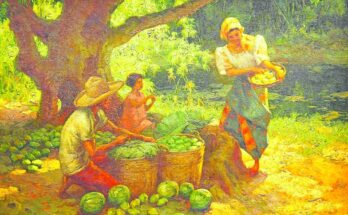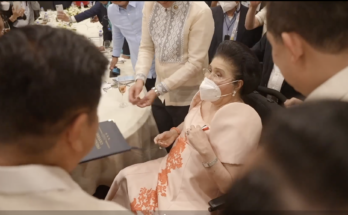Day 11 – VPO Farm and Eco Reserve, Rosario, Agusan del Sur
Following the route that we have taken, birding PICOP Timberland Forest in Bislig is usually the last birding site of the tour. We would normally exit our way to Butuan City to board our plane to Manila. This time, however, we have allotted three more days to explore an area we have not birded before. In fact, nobody has ever birded in this place, nobody that we know. Its inclusion is a result of the partnership between Haring Ibon – Birds in Focus and Lerio Chocolates. Two years ago, Lerio Chocolates were outsourced under the brand of Haring Ibon, and as the partnership is being renewed, an invitation to visit and explore their place was made.
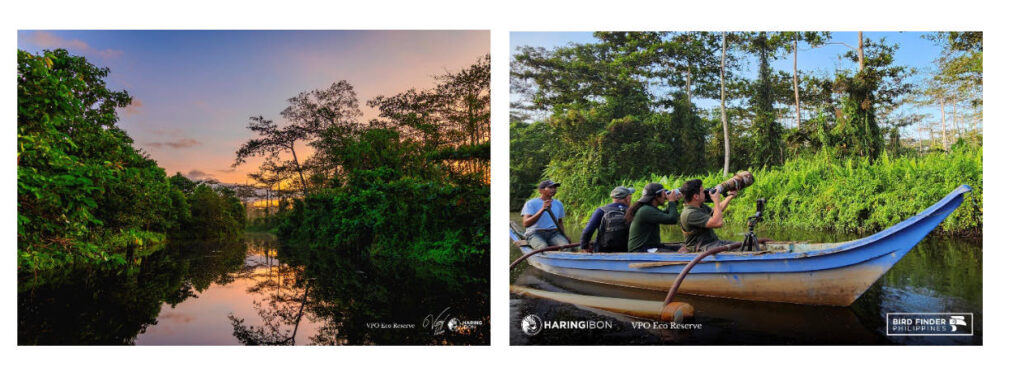
Lerio Chocolates is the chocolate product of VPO Farms and Eco Reserve, a 500-hectare family-owned land in Rosario, Agusan del Sur. Lerio is the name of the wife of the family patriarch and chairman of the family corporation Vivencio P. Ocite, Jr. (VPO), a full-blooded Manobo. The site has a farm and a protected area, a preserved marshland and forested area of mostly Talisay trees. We were met by the family representation at the Ko’on farm-to-table restaurant. Ko’on is a Manobo word for eat. Our gracious host told us to order whatever we wanted to eat. We wanted to order all, but the first servings of such delicious food already made us refuse to order for more. We were hosted in a nearby accommodation of an array of container vans converted into cozy outdoor rooms in a green lawn and well-landscaped garden. The rooms were only used for family friends, the pandemic having prevented their commercial use.
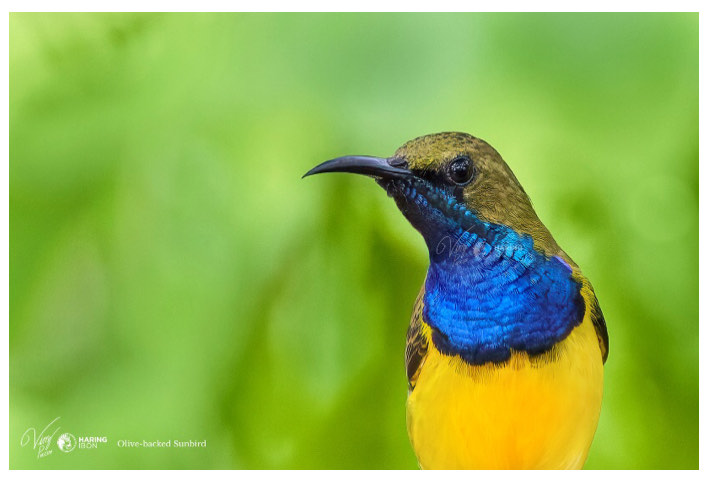
After a good night’s rest, at the break of dawn, we headed to the eco-reserve, a marshland surrounded by moat-like water. We boarded boats that were quietly paddled to bring us around the marshland where lots of monkeys could be seen, as well as birds and other animals too. We circled the marshland very curious of what lies inside, but there was no possibility of entering. So we put in our list of suggestions the building of a boardwalk inside, zigzagging towards and around the big trees where decks may be installed to allow observation and viewing of the surroundings, similar to the boardwalks in Las Piñas – Paranaque Wetland Park (Metro Manila), the SasmuanBangkong Malapad Critical Habitat and Ecotourism Area(Pampanga) and the Tanjay Mangrove Boardwalk (Negros Oriental). We recorded 46 bird species that first day. Southern Sooty Woodpeckers, Philippine Pygmy Woodpeckers, Olive-backed Sunbirds, Philippine Ducks, and Wandering Whistling Ducks were seen crossing the site. Mindanao Monitor Lizards and Philippine Sailfin Lizards were also seen basking on sunlit branches while troops of Long-tailed Macaque foraged on treetops. Landscape photos of sunrise are best in certain parts of the moat-like body of water.
In the afternoon, we went to the edge of a nearby forested area, still part of the VPO Farms and Eco Reserve. There we found a wonderful pond and habitat site where a Dimorphic Dwarf Kingfisher and Philippine Serpent Eagle were sighted. It is a perfect place to put up a hide to observe birds in the area.
Day 12 – VPO Farm and Eco Reserve, Rosario, Agusan del Sur
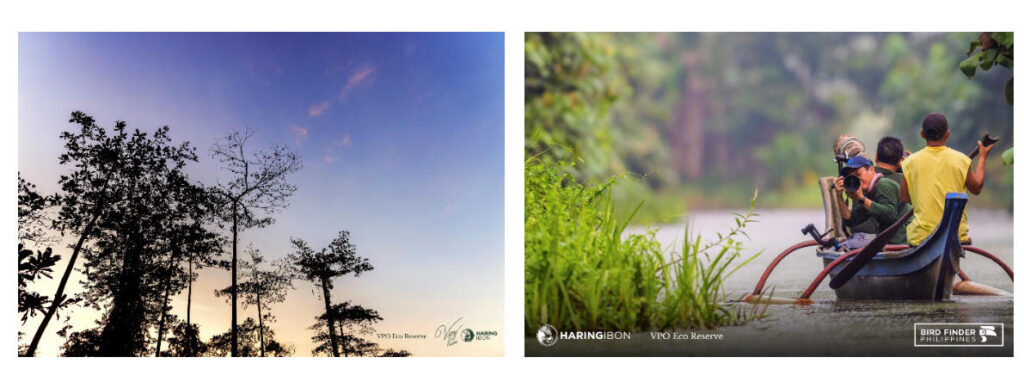
Djop, Vinz and Zardo were tasked to explore once again the marshland and the nearby forest. They birded along Solibao and Gibong Rivers and found the Southern Silvery Kingfisher, Osprey, Barn Swallows, Javan Pond-Herons, doves, egrets, and ducks while I had to return to Manila to catch up with a Board Meeting and Christmas Party of an IT company. Bird Finder Ben was able to explore the surroundings of the Ko’on restaurant and accommodation area – Hi’batan – and he shared with me his sighting of the beautiful Rufous Paradise Flycatcher. Hi’batan is Manobo for a place to lie down. Ah, the place can have some bird feeding stations and reflection pools to attract birds to give opportunities for easy birding for guests and visitors.
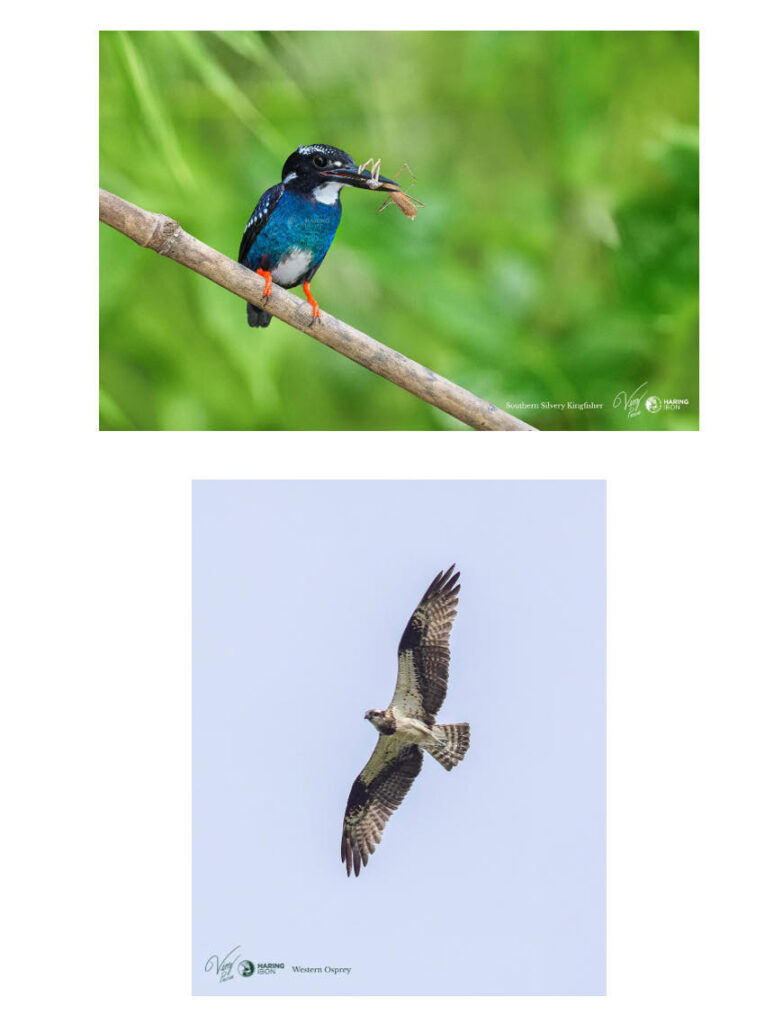
There is much more needed to be done to improve avian tourism in the country. Even if we have 254 endemic birds, tied with Brazil and second only to Indonesia, our avian tourism pales in comparison with the avian tourism in other countries. National and local government policies must be synchronized and registration processes be streamlined in order to maximize birding time. Bird feeding stations is one subject matter that must be thoroughly discussed to facilitate birding and to promote Philippine avian tourism for the rest of the birding world, taking inspiration from more established countries that have implemented successful birding and bird photography programs. Birding tour packages must also suit various kinds of interests and needs, offering different tour periods from 3 days to 21 days or more. All birding sites also need proper training and development of Bird Finders, bird guides who can cater to birdwatchers, bird photographers and nature enthusiasts with enough expertise in bird identification, good rapport and relations with local communities especially tribal groups, good communication skills and professionalism in the conduct of birding tours.
(Alain Pascua is the author of Haring Ibon – The Great Philippine Eagle, the only book that singularly focuses on the Philippine National Bird. He co-founded the Wild Bird Photographers of the Philippines. His photographs of the Philippine endemic birds have been featured in numerous publications both locally and internationally. His Ang Banogportrait of the Philippine Eagle has recently graced the cover of the historic All the Birds of the World book that features 11,524 bird species in 20,865 illustrations. He is a former undersecretary of the Department of Education)


